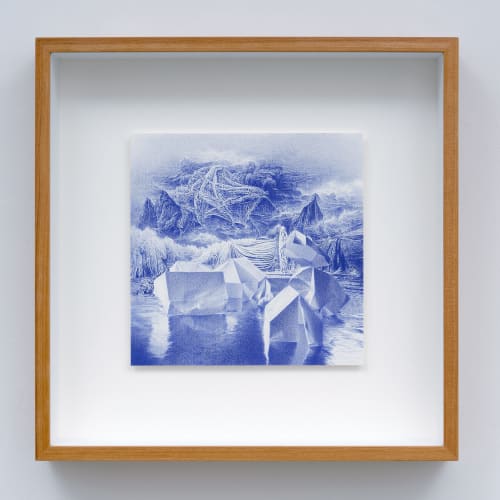Stephen Ellis (b.1957 Aotearoa, New Zealand) is an artist based in Tāmaki Makaurau Auckland.
'Ellis’ meticulously rendered drawings poetically engage the materialisation of climate change, once considered a “theory” yet now demonstrably manifesting in volatile physical forms both felt and lived. Ellis positions his imagery in the shifting, uncertain terrain between our imaginings of climate change and our representations of it. He depicts the Earth overwhelmed by the resulting natural forces: stormy seas and brooding skies feature prominently, also connecting Ellis to aesthetic traditions of the Sublime. His complex iconography adds an anthropogenic overlay, given our knowledge that these extreme phenomena are, in part, of our own making' - Emil McAvoy
With a background in film, the artist is known for his unique process where he builds dioramas, from which his compositions are derived. In his recent series’ ‘Each to Each’ (2021), ‘Unfolding’ (2022) and ‘Lamp Black’ (2023) the artist has combined these handmade models with prompts entered into AI image generators, this layering of imagery resulting in artworks that possess a surreal and dream-like quality.
Recent exhibitions include Lamp Black (solo), Sanderson Contemporary, Tāmaki Makaurau Auckland (2023) Unfolding (solo), Sanderson Contemporary, Tāmaki Makaurau Auckland (2022), Headforemost, Te Uru, Tāmaki Makaurau Auckland (2019); Headforemost, Tauranga Art Gallery (2018-19) ; Guidebook, Long Gallery, The Arts House Trust, Pah Homestead, Tāmaki Makaurau Auckland (2015); Pataka Art + Museum, Pōneke Wellington (2014).
Ellis was the winner of the Glaister Ennor Graduate Art Award (2015) and the New Zealand Painting and Printmaking Award - Supreme Award (2014).
